






Pendant and chain, sterling silver, 10 x 5,8 cm, @Tadzio
[+]Pendant and chain, sterling silver, 10 x 5,8 cm, @Tadzio
[-]6-channel soud installation, scaffolding, speakers, wires, audio, @Tadzio
[+]6-channel soud installation, scaffolding, speakers, wires, audio, @Tadzio
[-]Banner, velvet, satin, ,133 x 72 cm, @Tadzio
[+]Banner, velvet, satin, ,133 x 72 cm, @Tadzio
[-]Digital print on Fuji paper framed in Japanese cedar, 46,5 x 38 x 3 cm, 10 x 10 (image size), @Tadzio
[+]Digital print on Fuji paper framed in Japanese cedar, 46,5 x 38 x 3 cm, 10 x 10 (image size), @Tadzio
[-]Video, colour, sound, 10 min 28 sec, @Tadzio
[+]Video, colour, sound, 10 min 28 sec, @Tadzio
[-]Stone, steel, paint, glue, 65 x 28 x 20 cm, @Tadzio
[+]Stone, steel, paint, glue, 65 x 28 x 20 cm, @Tadzio
[-]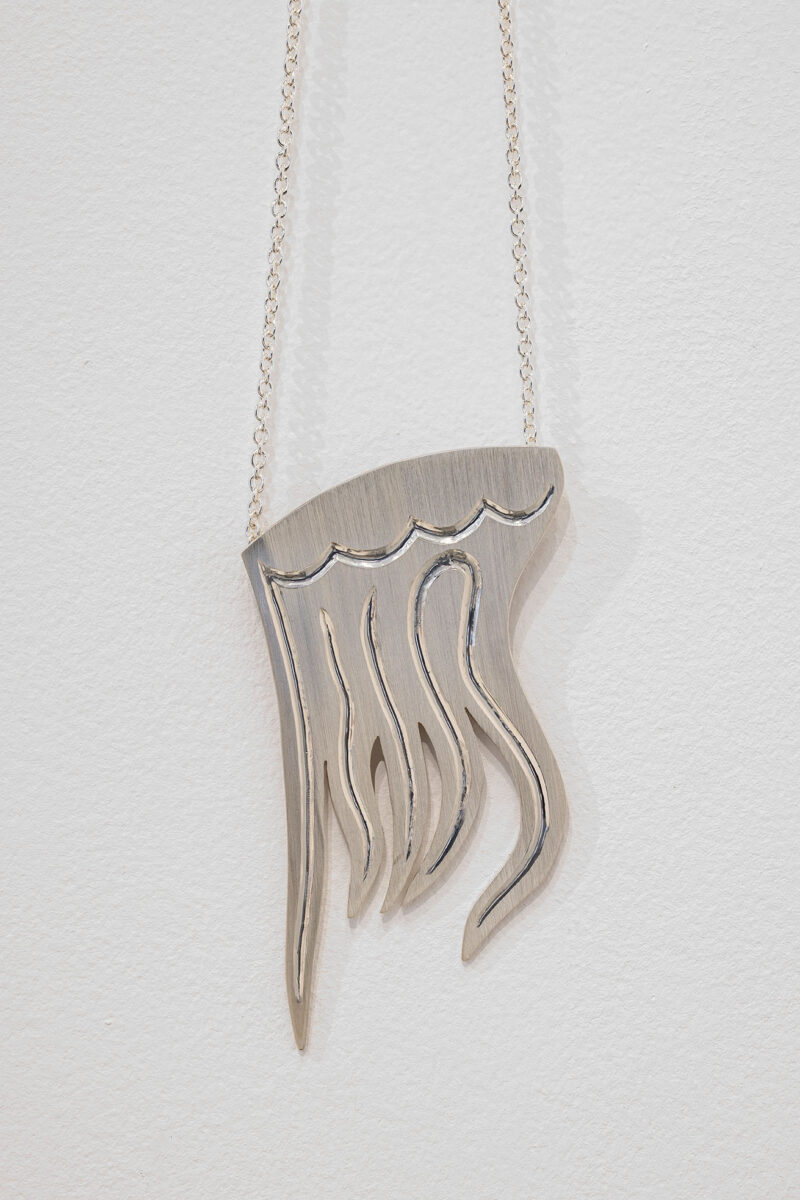
Pendant and chain, sterling silver, 10 x 5,8 cm, @Tadzio
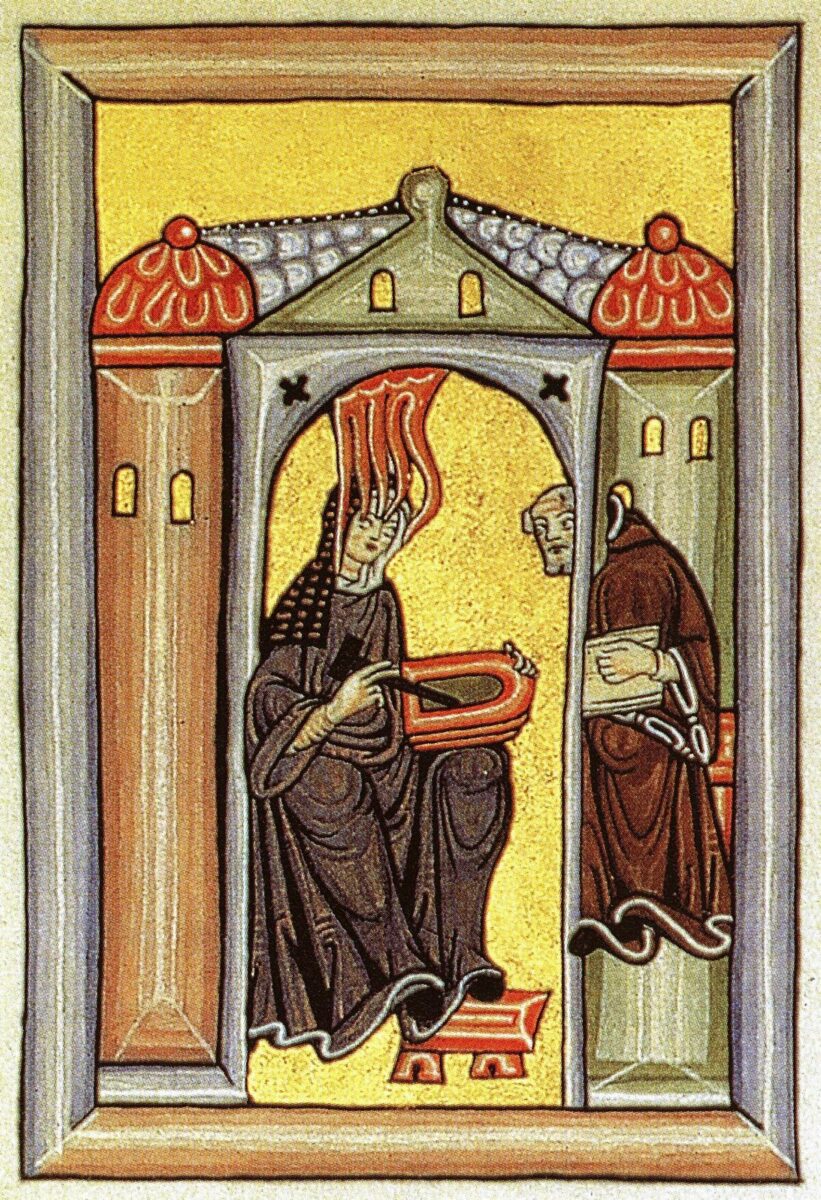
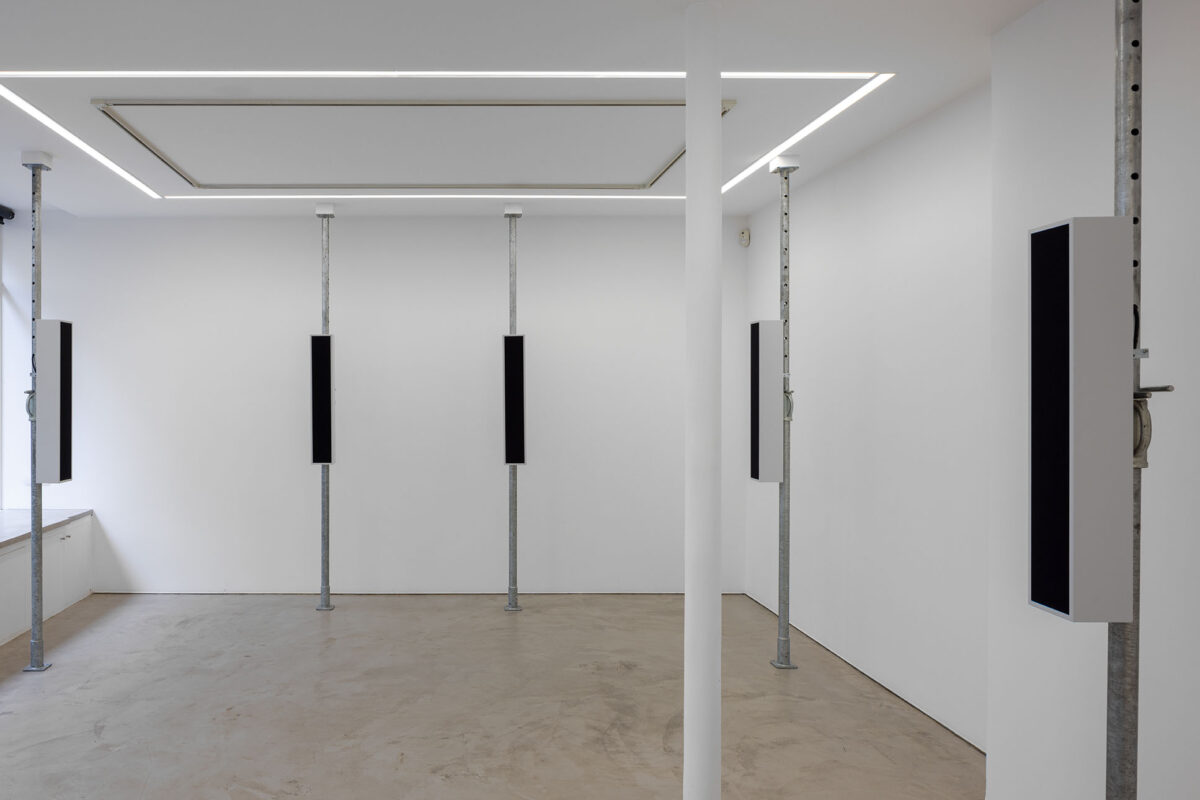
6-channel soud installation, scaffolding, speakers, wires, audio, @Tadzio

Banner, velvet, satin, ,133 x 72 cm, @Tadzio
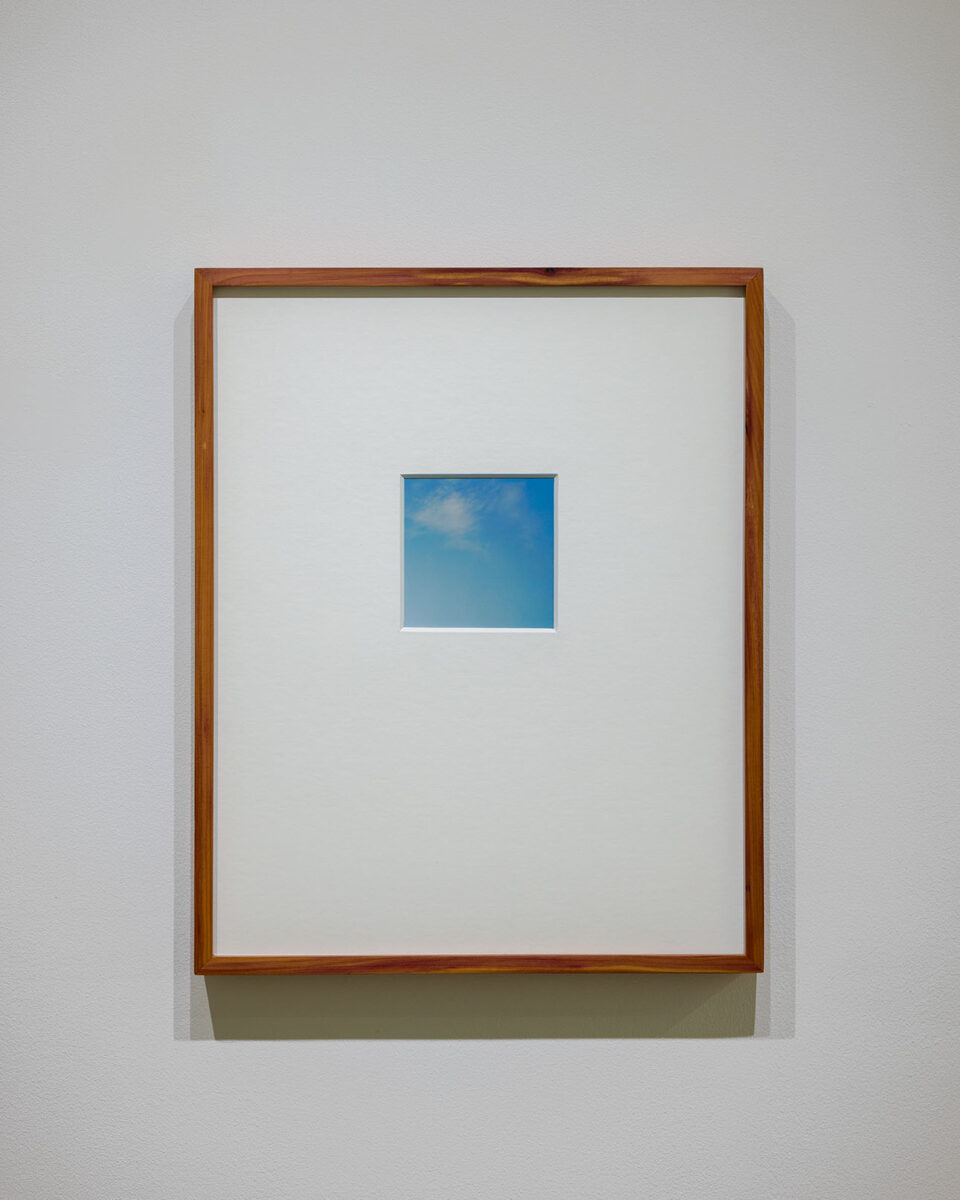
Digital print on Fuji paper framed in Japanese cedar, 46,5 x 38 x 3 cm, 10 x 10 (image size), @Tadzio
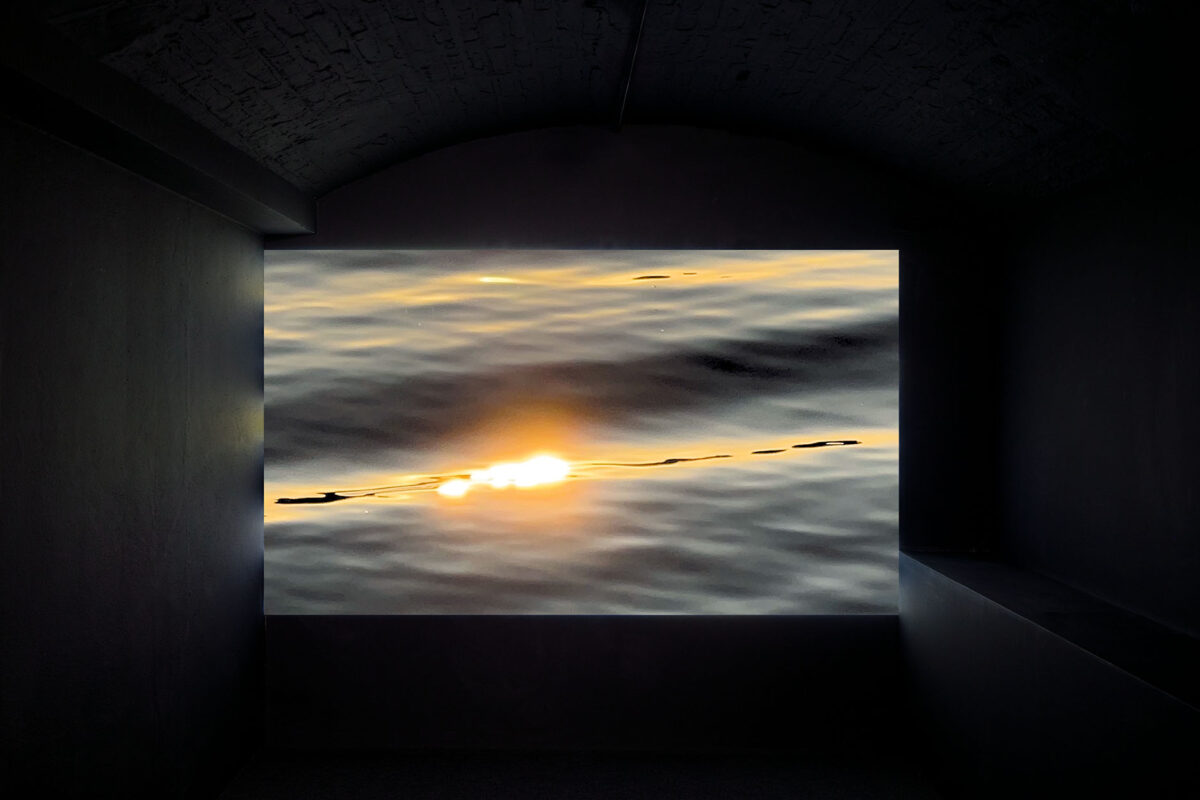
Video, colour, sound, 10 min 28 sec, @Tadzio
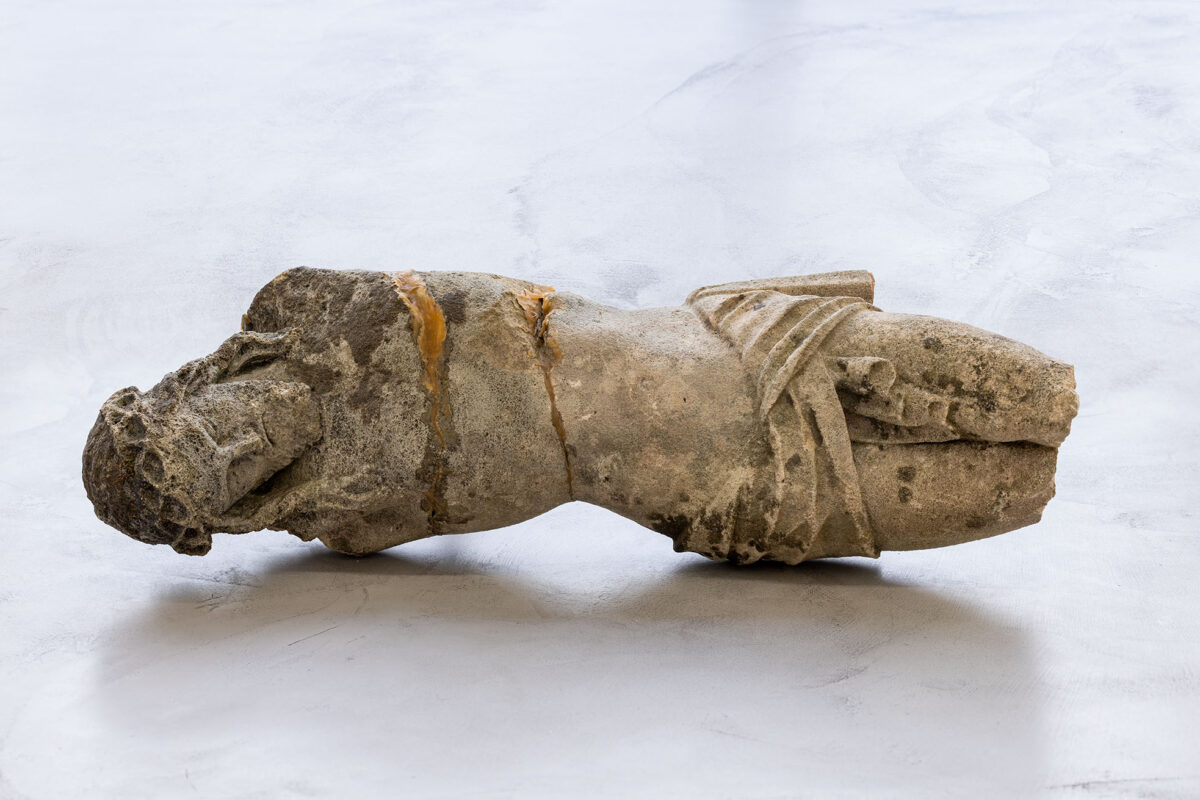
Stone, steel, paint, glue, 65 x 28 x 20 cm, @Tadzio
In his exhibition Let the Darkness Be a Doorway James Webb posits an encounter between the sacred, the invisible, and the nuclear.
By interlacing sites charged with technological memory and spiritual and artistic actions, he has created artworks that explore the connections between perception, history, and intimate experience.
The exhibition opens with Knowing the Ways (2024), a sound installation based on the compositions of Hildegard of Bingen, the 12th-century German abbess renowned for her visions, writings and musical works. The artwork was created in the KTH Reactor Hall, which once housed Sweden’s first nuclear reactor, R1, decommissioned in 1970. In this space, located twenty-five metres beneath Stockholm, a choir performed five of the Virtues from the sacred drama, Ordo Virtutum (1151): Humility, Love, Fear of God, Hope, and Mercy. The site’s unique acoustics were documented using sixteen microphones placed throughout the hall, recording the resonance of voices sounding the hollows and surfaces of the chamber. The intervention is broadcast through six loudspeakers mounted on scaffolding, which appears to support the gallery, enveloping the listener and reshaping the sonic space according to their position in the room. In doing so, the work interweaves the architectural materiality of the original site with the spiritual dimension of the chant, creating an environment where these two registers overlap and respond to one another. The figure of Hildegard of Bingen reappears in The Tongue Is a Flame | The Flame Is a Tongue (2025), a banner inspired by one of her mystical visions depicted on the frontispiece of her 1151 manuscript Scivias. Evoking visual associations of flames, tongues, and perhaps even tentacles, the red-and-gold banner appears as a symbol of mystical seeing and interpretation. Such visions, later diagnosed by the late British neurologist Oliver Sacks as migraine auras, resonate with James Webb’s personal experience as he also experiences a similar neurological condition.
The Sun Will Eat Its Children (2025) is shown in the video room. Filmed at Tranebärssjön—the artificial lake that now fills the former Ranstad uranium mine in Västergötland, Sweden— the work comprises cinematic meditations on sunlight scattering across the water’s surface. The resulting scintillations flicker in stark contrast to what the lake conceals beneath. Trance-like, the waves undulate with burning light while insects hover above. The sun’s glimmers echo the sparkles and distortions of Hildegard of Bingen’s ecstatic visions, creating a subtle fusion of industrial memory, intimate biology and altered perception. The film’s title references prophetic language and—as in Knowing the Ways—questions humanity’s lack of humility in the face of the nuclear threat.
A final, poetic image concludes the exhibition: a simple photograph of a blue sky. Webb photographed this sky from the atomic bomb hypocentre in Nagasaki. The image creates a connection with his 2005 artwork Untitled (9th August), which he installed in the closed gallery during the summer as a prelude to this exhibition and a silent memorial marking the 80th anniversary of the atomic bombing of Nagasaki. Deeply moved by his visit to the Nagasaki Atomic Bomb Museum, Webb was struck not so much by the objects on display as by the didactic texts: Melted glass object, Scorched stones from a shrine garden, Steel helmet with the remains of a skull, Mushroom cloud photographed from a US bomber. These fragments of narrative, both laconic and evocative, left a lasting impression on him. For this installation, Webb copied fifty of the English captions onto individual museum cards. This minimalist approach lends gravitas to each description, allowing the surrounding emptiness of the gallery to resonate with the absence—or spectral presence—of the objects. Let the Darkness Be a Doorway serves as a threshold.
The exhibition offers situations in which listening, feeling and seeing unfold differently and where the sacred is present within technological modernity: not as a comfort, but as a critical lens.
Exhibition journal